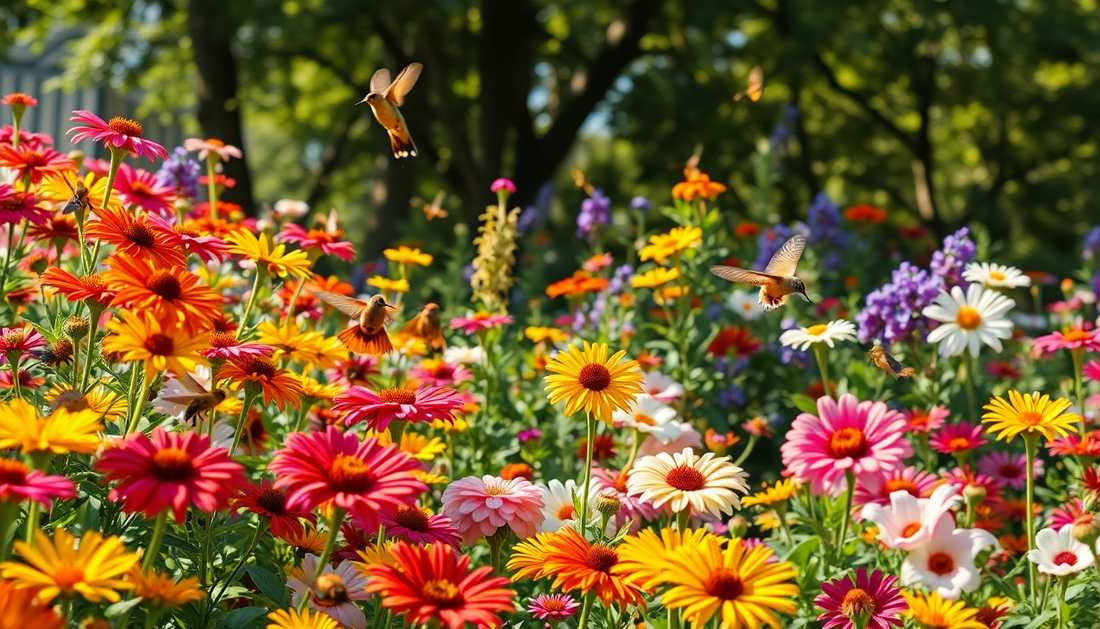
Creating a Pollinator-Friendly Flower Garden
With the growing importance of preserving biodiversity, many gardeners are turning to creating flower gardens that attract bees, butterflies, and other essential pollinators. Whether you have a small balcony or a large plot of land, it is possible to design a green space that will delight the senses while providing a haven for pollinating insects. In this article, we will guide you through the key steps to creating a welcoming and sustainable flower garden.
Choosing the Right Flowers
The first step toward a pollinator-friendly flower garden is selecting the right flower species. Some plants are particularly popular with bees, butterflies, and other insects because of their shape, color, and the amount of nectar they produce.
Nectar Rich Flowers
Flowers like lavender, salvia, cosmos and sunflowers are real pollinator magnets thanks to their abundant nectar production. Choose local varieties that are adapted to your region to maximize your chances of attracting a wide variety of insects.
Flowers with Staggered Flowering
To provide a food source throughout the season, opt for flowers that bloom in stages. Species like daisies, zinnias and rudbeckias will bloom in stages, ensuring a succession of colors and nectar for pollinators.
Native Flowers
Plants native to your area are often best suited to attracting local pollinators. Check with specialist nurseries to identify species best suited to your climate and soil.
Create Refuge Zones
In addition to flowers, it is important to provide refuge areas for pollinators. These spaces will allow them to rest, reproduce and protect themselves from predators.
Build Shelters
Install insect hotels, piles of wood or rocks, or areas of bare soil to provide nesting sites for solitary bees and other invertebrates.
Preserve Wild Areas
Leave part of your garden in its natural state, with native vegetation, litter and shaded areas. These spaces will serve as a refuge and breeding area for a multitude of species.
Avoid Pesticides
Using pesticides, even organic ones, can seriously harm pollinator populations. Opt for ecological gardening methods and encourage natural helpers such as ladybugs and spiders.
Diversify Plant Strata
To create a diverse and attractive ecosystem, it is important to play on the different plant layers in your garden.
Low Plants
Choose border flowers, ground cover plants and herbs that carpet the ground and provide shelter for insects.
Shrubs and Trees
Incorporate native shrubs and trees that will provide food and shelter for pollinators throughout the year.
Climbing
Climbing plants such as clematis, wisteria and honeysuckle will add verticality and depth to your garden, in addition to attracting many insects.
Maintaining your Flower Garden
A flower garden that is welcoming to pollinators requires appropriate maintenance to preserve its ecological balance.
Reasoned Size
Avoid pruning your plants too severely, let some of them flower and bear fruit to feed the insects.
Composting
Recycle your garden waste by composting it. This will enrich your soil and provide a habitat for many beneficial organisms.
Reasonable Watering
Adapt your watering practices to the needs of your garden and avoid wasting water. Prefer slow and targeted watering methods.
By following these tips, you can create a thriving flower garden that is rich in biodiversity and welcoming to pollinators. Let your creativity and sense of observation run wild to design a unique space that will delight your senses and contribute to the preservation of nature.
